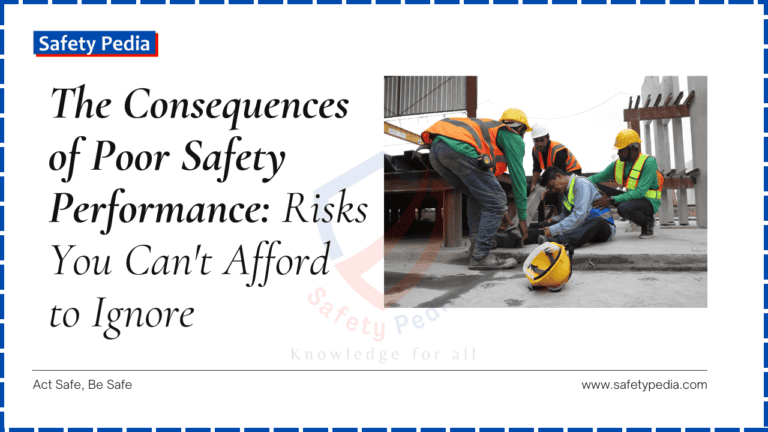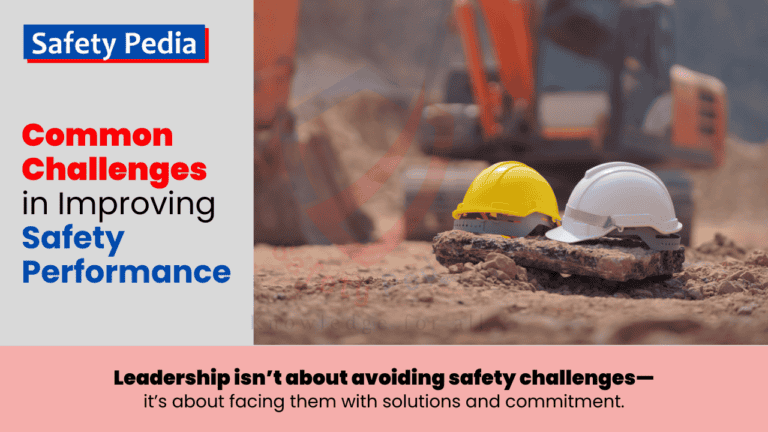
Introduction-Diwali Safety Tips
Diwali, often called the “Festival of Lights,” is one of India’s most cherished and celebrated festivals among Indian communities worldwide. It marks the victory of light over darkness, knowledge over ignorance, and good over evil. Celebrations during Diwali are known for their vibrant displays of lights, including oil lamps, decorative Diyas (oil lamps), and dazzling fireworks. Families unite, share sweets, and adorn their homes to welcome prosperity, fortune, and harmony. This festival symbolizes new beginnings and the renewal of hope, making it a cherished time for everyone.
However, as heartwarming as Diwali celebrations are, the activities involved—like lighting fireworks, setting up candles, and decorating homes with electrical lights—can pose safety risks if not approached cautiously. Fireworks are a central part of the celebration but can lead to accidental injuries, mainly burns and fire-related incidents. The festive lights and firecrackers can also exacerbate air pollution and create noise hazards, impacting the well-being of children, pets, and individuals with respiratory or heart conditions.
Each year, emergency rooms witness an uptick in incidents that could have been prevented with simple precautions. Considering these considerations, this guide provides practical safety tips to help you and your family enjoy a memorable yet safe Diwali. Following a few essential practices ensures that your Diwali is filled with light and joy—not trips to the emergency room.
1. Firecracker Safety: Reducing Fire Hazards and Injuries
Celebrating Diwali often includes the thrill of lighting firecrackers, which adds sparkle to the festivities. However, firecrackers can pose significant risks if not handled properly, leading to injuries, burns, and even large-scale fires. By following straightforward guidelines on choosing, using, and disposing of firecrackers, you can significantly reduce these risks and ensure a safer Diwali for everyone involved.
Choose Legal and Safe Firecrackers
To minimize the hazards associated with firecrackers, purchasing certified, legal fireworks from authorized dealers is essential. Certified firecrackers meet safety standards and reduce the chances of malfunctions that could lead to accidents. Legal fireworks are produced under controlled conditions to ensure they adhere to guidelines for safe ignition, regulated power, and limited chemical content, which are vital in reducing the risk of physical harm and environmental pollution.
When buying, look for clear packaging labels that indicate the product’s certification and manufacturing details. Avoid products without labelling, as they could be unregulated and more prone to malfunction. Certified crackers are designed to burn within a controlled intensity, reducing the risk of sudden explosions or unexpected bursts that can lead to severe injuries. Using trusted, legal firecrackers is a critical first step in ensuring the safety of everyone around.
Safety Gear and Precautions
Protective gear, such as gloves, safety goggles, and full-sleeved clothing, can significantly reduce the risk of burns and other injuries. Gloves help shield your hands, which are the most exposed when lighting fireworks, and goggles protect your eyes from stray sparks or debris. Additionally, maintaining a safe distance is crucial; position yourself at least an arm’s length away from the firecracker when lighting it, and use a long stick or lighting device to ignite it from a distance.
Never light a firecracker while holding it; avoid leaning directly over it. If it does not ignite on the first attempt, resist the urge to go near it immediately—wait a few minutes to ensure it isn’t a delayed ignition, then carefully discard it to avoid injury. Safety gear is essential for those handling the fireworks directly, but it’s also recommended for those nearby as a precautionary measure.
Adult Supervision
Firecrackers should never be handled by children unsupervised. Fireworks require careful handling, and children may not be aware of the dangers associated with improper use. Adults can ensure that fireworks are handled responsibly and that all safety measures are followed. Supervision is essential for ensuring children light fireworks from a safe distance, wear protective gear, and dispose of used firecrackers safely.
Setting up a designated “firework zone” can help prevent accidents, allowing children to celebrate from a safe distance while adults handle the lighting. To reduce the risk of accidental fires, consider creating a clear area free from flammable materials, including loose fabrics, trees, or other combustible items. Adults should also ensure that children know the dangers of picking up unexploded fireworks or relighting those that may have partially ignited.
Safe Disposal
Proper disposal of used firecrackers is critical in preventing accidental fires. After the excitement, used firecrackers should be placed in a bucket of water to ensure they are fully extinguished before disposal. This prevents residual embers from reigniting, which could cause fires if discarded in the trash. Let the used fireworks sit in the water for a few hours to be completely safe, then wrap them in a non-combustible material before discarding them.
Avoid leaving spent firecrackers lying around, as they could still contain small amounts of flammable chemicals that may be accidentally ignited. Safe disposal is environmentally responsible and reduces the risk of post-celebration accidents, keeping your home and community safer.
You can enjoy Diwali without compromising safety by choosing certified firecrackers, wearing protective gear, ensuring adult supervision, and safely disposing of used fireworks. These simple but effective measures help make the festival joyful, memorable, and accident-free.
2. Diya and Candle Safety: Preventing Fire Accidents Indoors
Diyas and candles are significant in Diwali celebrations, symbolizing prosperity, positivity, and light. However, using open flames indoors poses safety risks, especially during Diwali when homes are decorated with many flammable materials. Following essential safety precautions when using diyas and candles indoors can prevent accidental fires and ensure a safe, joyful celebration.
Placement Tips
Proper placement of diyas and candles is critical in reducing fire risks. Diyas and candles should always be placed on stable, non-flammable surfaces to prevent them from tipping over. Surfaces like glass, stone, and ceramic are ideal because they resist heat and won’t catch fire if a diya or candle falls. Always ensure the surface is level and secure, reducing the chances of movement or imbalance.
Keep diyas and candles away from curtains, furniture, and decorative fabrics. Flammable items like these can easily catch fire, especially if they are synthetic, which burns faster and hotter than natural fibres. A good rule of thumb is maintaining a minimum distance of two to three feet between open flames and combustible materials. Placing diyas and candles in safe, controlled locations can prevent many indoor fire accidents during Diwali.
Use of Fire-Resistant Decor
Decorating for Diwali often involves colourful fabrics, drapes, and hangings that can easily catch fire if placed too close to open flames. To reduce the risk of accidental fires, opt for fire-resistant or flame-retardant materials whenever possible. Fire-resistant decorations are treated with special chemicals to prevent them from catching fire or slowing down the burning process, giving you more time to react if a diya or candle falls over.
Consider using non-flammable holders for diyas and candles, such as clay or metal stands, which can help prevent contact between the flame and nearby flammable decor. Avoid synthetic materials like plastic, nylon, or polyester in the decoration setup, as they are highly combustible or flammable. Instead, choose natural materials, like cotton or wool, less likely to ignite quickly if they come into contact with a flame. Safety-conscious decoration choices can be stylish while minimizing the risk of fire.
Extinguishing Flames Before Sleeping
One of the most straightforward yet critical safety measures is extinguishing all open flames before bed or leaving the room. While the warm glow of diyas and candles adds to the festive ambiance, it’s essential to prioritize safety over ambiance when you’re not actively supervising the flame. Leaving flames unattended increases the risk of accidents, as an unattended flame could tip over, be blown by a draft, or encounter a stray piece of fabric.
Make it a habit to check every room before heading to bed, ensuring all candles, diyas, and other open flames are extinguished. To maintain the ambiance, consider using battery-operated LED candles, which provide a similar effect without the fire risk. Extinguishing flames before bed is especially important in households with children or pets, as they may accidentally knock over candles or diyas.
Following these diya and candle safety practices allows you to enjoy a beautiful, illuminated home during Diwali without compromising safety. Proper placement, choosing fire-resistant decor, and extinguishing flames before bed are simple yet effective precautions that significantly prevent indoor fires.
3. Electrical Safety: Avoiding Short Circuits and Electric Shocks
During Diwali, homes and businesses are adorned with colourful electric lights and elaborate decorations, bringing festive energy to life. However, with the increased use of electrical decorations comes the need for extra caution to avoid electrical hazards, including short circuits and electric shocks. Following these safety measures will help ensure that your Diwali lights remain a source of joy, not danger.
Inspect Decorative Lights
Before setting up decorative lights, it’s essential to inspect them thoroughly. Check for any frayed wires, broken bulbs, or loose connections, as these issues can cause short circuits, which may lead to electrical fires. Damaged wiring also increases the risk of electric shock if touched or exposed to rain or moisture, especially if the decorations are placed outdoors. Replacing broken or damaged lights with new, intact ones is safer than attempting repairs on faulty wiring.
Additionally, avoid overloading power outlets by plugging too many lights or decorations into a single socket. Overloaded outlets and extension cords can overheat, significantly raising the chance of a fire. Instead, distribute the lighting load evenly across multiple outlets, using surge protectors or extension cords designed for high-wattage use when necessary. Keeping your setup safe from wiring issues and avoiding power overloads are crucial to reducing electrical hazards during Diwali.
Use Certified Products
Using certified decorative lights and electrical products is essential for preventing accidents caused by substandard wiring and poor-quality insulation. Certified lights are designed to meet safety standards that reduce the risks of short circuits, overheating, and electrical shocks. Look for certification marks, such as UL, CE, or BIS (for products in India), as these labels indicate that the product meets specific safety and performance standards.
Uncertified products are often cheaper but may use low-quality materials that can degrade or overheat quickly, increasing the risk of short circuits or electric shocks. In addition, certified products are often better insulated against moisture, which is critical if the lights are placed outdoors or in areas with humidity. While certified lights may cost more initially, they offer far greater safety and durability, making them a wiser choice in the long run.
Turn Off When Not in Use
One of the simplest yet most effective electrical safety practices is to turn off all decorative lights before going to bed or leaving the house. Leaving lights on overnight or unattended increases the risk of short circuits, overheating, and potential electrical fires. Moreover, lights left on for extended periods can overheat and pose a fire risk, especially if they are in contact with flammable materials, like drapes or decorations.
Using timers to automatically switch off lights after a certain period can be helpful, especially if you’re likely to forget. Smart plugs or outlets with automatic off-switch features can also help prevent continuous usage, reducing electricity consumption and minimizing the chance of fire hazards. This simple habit prevents potential dangers and conserves energy, making your Diwali celebration more eco-friendly.
You can avoid common electrical hazards during Diwali by inspecting decorative lights, using certified products, and turning off lights when not in use. These safety measures ensure that your home remains beautifully decorated and protected against accidents, allowing you to enjoy a festive and worry-free Diwali.
4. Pet Safety: Keeping Pets Calm and Safe
Diwali can be stressful for pets, as loud firecrackers, bright lights, and bustling activities may overwhelm their senses. By minimizing noise exposure, keeping pets indoors, and using soothing techniques, you can ensure that your furry friends remain calm, comfortable, and safe throughout the festivities.
Noise Reduction
Noise from firecrackers is one of the most significant stressors for pets during Diwali. To help them feel secure, try setting up a quiet, comfortable room to retreat to. Choose a room from the main activity area, preferably without windows, to reduce noise and exposure to flashing lights. Close windows and draw curtains to muffle sounds and block out bright lights from outside. Additionally, playing calming music or using a white noise machine can help drown out the loud noises of firecrackers, providing a soothing environment for your pet.
If you have to leave your pet at home, ensure they have access to this safe space and are familiar with it. Setting up the room in advance, complete with their favourite toys, blankets, and bedding, can help them associate the space with comfort and security.
Avoid Fireworks Near Animals
One of the simplest ways to keep pets safe is to keep them indoors during peak fireworks. The sudden sounds and flashing lights of firecrackers can be highly distressing for animals, causing them to become frightened or even run away. Many pets have heightened senses and are more susceptible to anxiety from loud sounds and sudden changes in their environment.
If you have a backyard or open area, avoid lighting fireworks near this space, even if the pet is kept indoors, as they can still sense and hear the commotion. Additionally, ensure that all windows and doors are securely closed to prevent your pet from attempting to escape out of fear. It’s also a good idea to avoid taking pets for walks during peak fireworks times, as they might become overly stressed or attempt to flee if they hear loud noises outdoors.
Soothing Techniques
Soothing techniques can be highly effective in helping pets cope with anxiety from Diwali celebrations. Here are a few suggestions:
- Comforting Presence: Spend time with your pet during peak times of noise. Your calm presence can help reassure them and reduce their stress. Petting and talking to them soothingly can help calm them down, letting them know they’re safe.
- Pressure Wraps: Many pets feel comforted by gentle, constant pressure provided by a pet anxiety wrap or even a soft cloth wrapped around their torso. These wraps are known to have a calming effect, similar to a swaddling blanket for infants, and can help pets feel more secure during stressful events.
- Natural Remedies: Consult a veterinarian about calming aids like pheromone sprays, which can be sprayed in their safe room to create a soothing environment. Some pets may also benefit from natural supplements or prescribed calming medications for anxiety, especially if they are susceptible to loud noises.
- Engaging Activities: Giving pets chew toys, treat puzzles, or interactive toys can help distract them from external noises. Providing mental stimulation can also help divert their attention and relieve anxiety.
These techniques can be used individually or in combination to help pets remain calm and relaxed during Diwali celebrations. As every pet reacts differently to stress, it’s essential to observe what works best for your furry friend and prepare accordingly.
5. Air and Noise Pollution: Minimizing Environmental Impact
Diwali is traditionally celebrated with firecrackers, which, though visually spectacular, have a significant environmental impact. The smoke, loud sounds, and chemical byproducts released during the celebration contribute to air and noise pollution, affecting public health and the environment. By choosing eco-friendly alternatives, using low-noise options, and reducing overall firecracker use, we can celebrate responsibly while minimizing the festival’s environmental footprint.
Switch to Eco-Friendly Firecrackers
Eco-friendly or “green” crackers are a more sustainable choice for celebrating Diwali. Developed to produce lower emissions, green crackers release fewer pollutants into the air, reducing the harmful effects on air quality. They are manufactured with alternative raw materials that limit hazardous elements like barium, lithium, and lead, common in traditional firecrackers and contribute to air pollution and respiratory issues.
Green crackers can reduce particulate matter (PM) emissions by 30-35% and produce less smoke. They are also made with improved chemical formulations that minimize toxic elements and use a reduced shell size to release less noise. These eco-friendly options are certified by safety authorities and must display a QR code for verification, ensuring that they meet specific environmental standards. Opting for green crackers helps reduce air pollution and makes the festival safer and healthier for everyone, particularly those with respiratory conditions.
Opt for Low-Noise Fireworks
Noise pollution is a significant concern during Diwali, as the loud sounds from firecrackers can cause distress to people, pets, and wildlife. Opting for low-noise fireworks helps create a more inclusive celebration that doesn’t disturb the well-being of others, particularly children, elderly people, and pets who may find loud sounds overwhelming. Low-noise fireworks, designed to produce minimal sound, can offer a satisfying visual experience without the distressing loud explosions associated with traditional crackers.
Many cities and communities encourage people to adopt quieter alternatives to reduce noise levels. In some areas, regulations limit the decibel level of fireworks, with a typical safe range below 125 dB. While low-noise fireworks may not produce the same booming effects, they still create beautiful light displays. They allow families to enjoy a vibrant celebration without the disruptive noise, making it a win-win for everyone.
Avoid Overuse
One of the simplest ways to reduce air and noise pollution during Diwali is to minimize the overall use of firecrackers. Reducing firecracker use lowers emissions and limits waste generation, which benefits the environment and public health. Consider a more minor, symbolic display instead of an extensive firework display or limit the celebration to a single round of crackers. This way, you can capture the festive spirit without compromising environmental responsibility.
Community celebrations are another effective alternative to individual displays. By organizing a single, controlled event in a neighbourhood or locality, communities can reduce the number of firecrackers used while providing a festive experience for everyone. This approach minimizes pollution and promotes a sense of shared celebration and community togetherness. Encouraging mindful use of firecrackers can significantly reduce the environmental impact of Diwali celebrations.
By adopting eco-friendly firecrackers, choosing low-noise fireworks, and reducing overuse, you can make your Diwali celebration safer and more environmentally conscious. These changes help preserve the festival’s spirit while ensuring a cleaner, healthier environment.
6. First Aid Preparedness: Being Ready for Minor Accidents
During Diwali, the use of firecrackers, diyas, and candles increases the risk of minor accidents, such as burns or cuts. Being prepared with a well-stocked first aid kit, knowledge of quick burn treatment methods, and emergency contacts can make a significant difference in handling injuries efficiently and minimizing their impact. Here are some essential steps to ensure safety during Diwali celebrations.
First Aid Kit Essentials
A properly stocked first aid kit is the first defence against minor injuries. Here’s a list of essential items to include, especially during Diwali:
- Antiseptic Wipes: To clean wounds and reduce infection risk.
- Sterile Gauze and Bandages: Cover cuts or minor burns to protect from further injury and infection.
- Adhesive Bandages: For minor cuts and scrapes.
- Burn Ointment: Over-the-counter burn creams can help soothe mild burns, reduce pain, and prevent infection.
- Cooling Gel or Aloe Vera Gel: For soothing burns or minor skin irritation.
- Scissors and Tweezers: Scissors are used to cut bandages and gauze, and tweezers are used to remove debris from wounds.
- Cotton Balls and Cotton Swabs: For applying ointments or cleaning small areas.
- Pain Relievers (e.g., ibuprofen, paracetamol): To help manage pain following an injury.
- Sterile Gloves: To prevent infection when treating wounds.
- Eye Drops: These are used to flush the eyes in case of exposure to smoke or small debris from firecrackers.
Having these items ready allows immediate care, preventing a minor injury from worsening until professional medical help is available.
Quick Burn Treatment Tips
In the event of a burn, quick and appropriate treatment can reduce pain and prevent infection. Here are some essential steps:
- Cool the Burn: Immediately run cool (not ice-cold) water over the affected area for at least 10–20 minutes. This helps to cool down the skin, reduce swelling, and prevent the burn from penetrating deeper into the tissue. Avoid using ice directly, as it can damage the skin further.
- Cover with Sterile Gauze: After cooling the burn, gently pat it dry and cover it with a sterile gauze pad or a clean, non-stick cloth. Avoid using cotton balls or materials that may stick to the burn. This covering helps keep the area clean and reduces the chance of infection.
- Apply Burn Ointment or Aloe Vera: If available, use a burn ointment or aloe vera gel to soothe the area and reduce pain. Ensure the ointment is meant explicitly for burns, as some products may irritate the damaged skin.
- Avoid Popping Blisters: If blisters form, avoid popping them, as they protect the underlying skin from infection. Let them heal naturally, and cover them with sterile gauze if they are in an area where they may be easily disturbed.
- Pain Management: If the burn is painful, use over-the-counter pain relievers, such as ibuprofen or paracetamol. However, for more extensive or severe burns, seek immediate medical help.
For more extensive burns, or if the skin appears charred or blisters immediately, it is essential to get professional medical help. Quick and appropriate care minimizes the chance of complications.
Emergency Contacts
Having emergency contact numbers readily available is crucial, especially during festivals like Diwali, when the risk of accidents is higher. Here’s a list of numbers to keep on hand:
- Local Emergency Services (e.g., 911 in the U.S., 112 in the EU, or 108 in India): This number is essential for immediate help in any serious accident.
- Nearby Hospitals and Ambulance Services: Save contact details for nearby hospitals, clinics, and private ambulance services. Knowing the closest medical center can reduce response time in an emergency.
- Poison Control Center: In case of any accidental ingestion of harmful substances, especially by children.
- Veterinarian or Animal Emergency Services: If you have pets, keep a veterinarian’s contact number available if firecrackers or other hazards injure them.
- Family and Friends: Ensure all family members are aware of emergency contacts, and if hosting a Diwali event, share these numbers with guests as well.
Saving these contacts on your phone and displaying them visibly within the home can make a critical difference in an emergency, allowing for a quick and calm response to accidents.
By preparing a first aid kit, knowing basic burn treatment steps, and having emergency contacts ready, you can help ensure that minor injuries are managed effectively during Diwali. This level of preparedness allows for a safer, more enjoyable celebration, giving peace of mind and reducing the risk of more severe complications from minor accidents.
7. Clothing and Fabric Safety: Preventing Burns and Injuries
Diwali celebrations involve using open flames from diyas, candles, and fireworks, making it essential to choose appropriate clothing to avoid accidents. Careful selection of fabric and clothing style can minimize the risk of burns and ensure that your attire is both stylish and safe.
Choose Fire-Resistant Fabrics
Opting for fire-resistant materials like cotton is one of the best ways to stay safe during Diwali. Cotton and other natural fabrics are less flammable than synthetic materials, which tend to ignite and melt quickly when exposed to open flames. In contrast, cotton will burn more slowly and is less likely to cause severe burns or injuries. Wool is another good option, as it has natural flame-retardant properties, though it may be less commonly used in traditional Diwali clothing.
Synthetic fabrics like polyester, nylon, and rayon should be avoided around flames, as they tend to melt when exposed to heat. Melting fabrics can stick to the skin, causing painful burns that are more challenging to treat than burns from natural fibres. If you’re looking for a blend, choose options where natural fibres like cotton dominate the blend. Fire-resistant clothing for festivals and traditional events can also be a wise choice, especially for children, who may be more prone to accidents.
Avoid Flowing Garments
Loose or flowing garments, such as sarees, dupattas, and long sleeves, are traditional attire for Diwali but can pose a higher risk when around the fire. Long, flowing fabric can easily catch fire if it comes too close to diyas, candles, or fireworks. For example, the ends of sarees or dupattas might inadvertently brush against a flame, leading to dangerous burns. Choosing fitted clothing or opting for styles with shorter sleeves and more controlled fabric reduces this risk, allowing you to celebrate Diwali safely.
If you prefer traditional wear, consider styles that secure fabric, like sarees wrapped tightly with no loose ends, kurtas, and jackets with fitted sleeves. For women, smaller or well-secured dupattas and scarves can still be worn without adding too much fabric that could catch fire. Kids’ clothing should follow similar guidelines to avoid loose ends or excessively flowing fabric. Choosing safer cuts and fits doesn’t mean compromising style; many modern outfits can balance traditional aesthetics and safety.
By selecting fire-resistant fabrics and fitting garments, you can stay safe from potential burn injuries during Diwali. These simple steps ensure that you can enjoy the festival’s activities and traditions with greater peace of mind, knowing that your clothing won’t pose unnecessary risks.
8. Health Precautions for Vulnerable Groups: Asthma and Heart Patients
Diwali festivities often bring increased pollution from firecrackers and candles, which can pose significant health risks, especially for vulnerable groups like asthma patients, the elderly, and individuals with heart conditions. To ensure a safe celebration, specific precautions, including monitoring air quality, minimizing outdoor exposure, and keeping essential medications at hand, are essential.
Air Quality Monitoring
Air quality can deteriorate significantly during Diwali, especially in areas where firecrackers are commonly used. Fireworks release various pollutants, including particulate matter (PM2.5 and PM10), sulfur dioxide, and heavy metals, all contributing to respiratory and cardiovascular stress. For asthma and heart patients, exposure to high levels of these pollutants can trigger symptoms or exacerbate underlying conditions.
To mitigate this risk, individuals should monitor the local air quality index (AQI) through reliable sources like the AQI app or websites such as AirVisual or government platforms. If pollution levels are high, staying indoors is recommended, as this limits direct exposure to outdoor air pollutants. Additionally, wearing an N95 mask when outdoors can provide some protection against inhaling delicate particulate matter. While masks can reduce exposure, it’s best to avoid outdoor activities during peak pollution hours, typically in the evening and nighttime during Diwali.
Stay Indoors When Necessary
Individuals with respiratory conditions like asthma, chronic obstructive pulmonary disease (COPD), or heart ailments are particularly vulnerable to the effects of smoke and pollutants. Staying indoors during high pollution hours reduces their exposure and helps to maintain better air quality within the home. Keeping doors and windows closed can further prevent pollutants from entering indoor spaces.
If staying indoors becomes uncomfortable due to indoor pollution, using air purifiers with HEPA filters is beneficial, as these devices can filter out most airborne particles. Avoid lighting candles or diyas indoors, which can contribute to indoor air pollution. Instead, consider LED lights for decorations, which are safe and do not release any pollutants. These precautions can help individuals with asthma or heart conditions avoid the worst pollution, allowing them to celebrate Diwali comfortably and safely.
Medication Readiness
Having medications ready is crucial for asthma and heart patients during Diwali, as increased pollution and stress from festivities can increase the likelihood of health incidents. For asthma patients, this means keeping rescue inhalers close by and readily accessible, especially during peak pollution hours. It’s also wise to have a spacer, which can improve the effectiveness of the inhaler by delivering more medication to the lungs.
For those with heart conditions, prescribed medications for controlling blood pressure or angina should be kept within reach. In case of emergencies, it’s essential to have nitroglycerin tablets or sprays accessible, as these can provide rapid relief for chest pain or angina. Additionally, asthma and heart patients should inform their family members of their condition and the location of their medications to ensure that help is readily available. Consulting a physician before Diwali to confirm medication dosages and review emergency protocols is another helpful step in preparing for the festival.
Individuals with asthma or heart conditions can enjoy Diwali in a safe, controlled environment by monitoring air quality, limiting exposure to outdoor pollution, and ensuring medications are on hand. These precautions help minimize the health risks associated with increased pollution, ensuring that all individuals, regardless of health conditions, can partake in the celebrations with greater peace of mind.

Conclusion
Diwali is a time of joy, celebration, and community, but ensuring everyone’s safety is essential to enjoying the festival without unnecessary risk. By taking precautions, from firecracker and diya safety, to considering the well-being of vulnerable groups like children, pets, and those with health concerns, we can minimize hazards and keep the focus on the joyful aspects of the holiday.
Each safety measure—from choosing fire-resistant clothing and having a well-stocked first aid kit to monitoring air quality and reducing noise pollution—is crucial in making Diwali safer. By following these guidelines, we protect ourselves and our loved ones and contribute to a more environmentally conscious and inclusive celebration.
As you enjoy the festivities, consider sharing these safety tips with friends and family. Raising awareness helps create a community-wide culture of safety, benefiting everyone. Wishing you and your family a bright, safe, and prosperous Diwali filled with laughter, love, and cherished memories.
References:
https://www.cloudninecare.com/blog/diwali-safety-tips-for-kids-and-parents
Your one click can make a difference
Keep sharing and promoting health and safety awareness!
Related posts:

The Consequences of Poor Safety Performance: Risks You Can’t Afford to Ignore
Discover the potential consequences of poor safety performance in the workplace and how they can negatively impact both employees and the company as a whole.

18 Common Challenges in Improving Safety Performance at Work
Discover 18 common challenges in improving safety performance at work. Learn how to overcome these obstacles for a safer workplace.

20 Best Ways to Improve Safety Performance in the Workplace
Discover the 20 best ways to improve safety performance at workplace, including actionable strategies for hazard prevention, employee engagement, safety training, and cultivating a culture of well-being.
Join Our Safety Community!
Stay informed with the latest tips and insights on occupational health, safety, and the environment.






